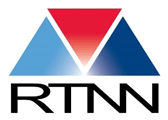The Rapid Turnaround Experiment (RTE) program through the Nuclear Science User Facilities (NSUF) at Idaho National Laboratory is currently accepting proposals (due October 31, 2019). The PULSTAR Reactor Laboratory at North Carolina State University is pleased to be an NSUF partner institution and, as such, is available to perform Rapid Turnaround Experiment funded analyses for internal and external users.
Through the peer-reviewed RTE application process, NSUF provides external research teams with cost-free access to reactor, post-irradiation examination (PIE) and beam-line capabilities at INL and a diverse mix of affiliated partner institutions at universities, national laboratories and industry facilities located across the country. Information and application instructions may be found at the RTE program webpage.
The analytical testing and irradiation capabilities available through the RTE program at the NC State PULSTAR Reactor Laboratory include:
- Neutron Powder Diffraction Facility and Microstructure Analysis
- Intense Positron Beam Facility and Defect Analysis
- Neutron Imaging Facility
- Reactor Irradiations and Isotope Production
- Neutron Activation Analysis
- Ultra-Cold Neutron Source
Please see the NC State Nuclear Reactor Program User Guide for additional details concerning the capabilities listed above. In addition to irradiation facilities, the RTE program also provides access to the NSUF Nuclear Fuels and Materials Library. Most of the library materials are conventional or advanced reactor structural materials which have been irradiated in EBR II or the Advanced Test Reactor (ATR). A smaller subset of library samples were proton irradiated at the LANSCE facility at Los Alamos National Laboratory (LANL), or irradiated at the High Flux Isotope Reactor (HFIR) at Oak Ridge National Laboratory (ORNL) or the Fast Flux Test Facility at Hanford. Samples may be ‘checked out’ of the library and analyzed utilizing the PIE facilities available at NSUF partner facilities – including those available at the PULSTAR. See this white paper for more information about the library and how to access samples.
Three calls for RTE proposals are issued per year. Please contact Scott Lassell (scott_lassell@ncsu.edu) if you are interested in learning more about the capabilities of the PULSTAR Reactor or have questions about the RTE program.

